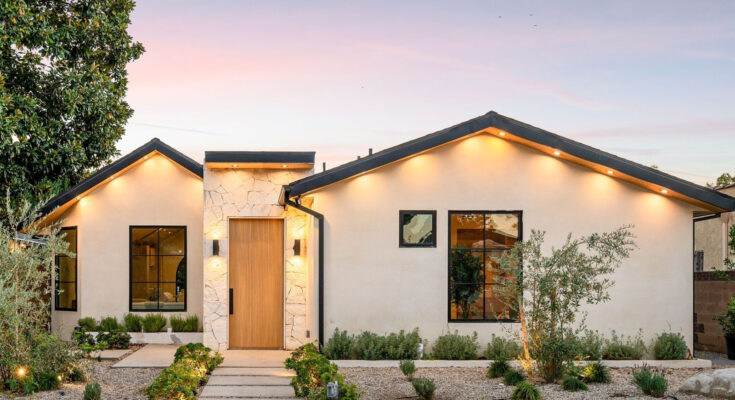Which Exterior Lights Should You Leave On Or Turn Off?
When you think of turning your lights off before bedtime, you’re probably picturing a light switch or lamp in a bedroom. But what about your home’s exterior lights? Which should you leave on and which is best to turn off? The answer depends on your lighting setup, but the goal should be to maximize your home’s energy efficiency while minimizing light pollution that could affect the people and wildlife in your neighborhood.
Ignoring efficiency is a definite outdoor lighting mistake to avoid. For instance, are your outdoor lights incandescent bulbs or LEDs? Incandescent bulbs are higher energy consumers, and leaving a 60-watt incandescent bulb on for 12 hours per night will run you around $2.16 per month— and that’s just the cost of one bulb. In comparison, LEDs are more efficient, meaning that leaving a 9-watt LED on for 12 hours a night costs only about $0.32 per month per bulb. Plus they are longer-lasting, so you won’t have pay to replace the bulbs as often.
To take light pollution into account, choose lights for your yard that are dark-sky compliant. This means they’re approved by the International Dark-Sky Association to reduce light pollution by directing light downward instead of letting it escape toward the sky. Too much artificial light can disrupt feeding behaviors and migration patterns of wildlife, plus increased light pollution has been linked to worse sleep quality for people – so you’ll be doing your human AND animal neighbors a favor.
Exterior lights you can leave on overnight
Which lights can be left on overnight also depends on what type of lights you’re dealing with. While you may generally want to think twice before keeping your exterior lights on overnight, switching to something like motion sensor lights can help you not have to think about it — since the lights turn off when not needed. As the name suggests, motion sensor lights only light up when they identify movement within their sensor range. Leaving them “on” doesn’t mean a constant stream of light. This makes them energy-efficient and convenient, especially if you place them correctly.
To optimize sensor range coverage, it’s recommended to mount fixtures 6-10 feet above ground level along your exterior’s most high-traffic areas, such as entryways and driveways. It’s also best to set up the sensors so they’re detecting things moving across their field of view instead of toward them. This wider range will make the lights less finicky and eliminate potential blind spots — as will installing multiple units with overlapping detection zones.
The most eco-friendly exterior lighting
If the area you’re lighting gets 6-8 hours of direct sunlight daily, it could be a good candidate for an even more energy-efficient option: solar lights. No need to worry about turning these lights on and off, because the sun will take care of that for you. Solar path lights work via photovoltaic panels that absorb sunlight during the day to charge internal batteries. At night, a sensor will automatically switch on the light’s LED bulb, which can shine for about 8-10 hours after a full charge. The light sensor will then switch them back off again at dawn. And because solar path lights are solar-powered, there’s no external power source required, making these the ultimate eco-friendly (and energy-bill-friendly) outdoor lights.
Choosing the best spot to place your solar lights comes with a lot of flexibility, since they aren’t dictated by the location of your electric outlets –meaning you can place them anywhere that gets enough light. That means avoiding shady spots under roof overhangs or areas below dense tree canopies. For minimal dark patches at night, the recommendation is to space your lights 6-8 feet apart.
